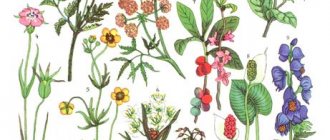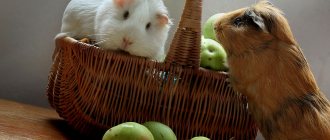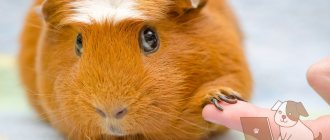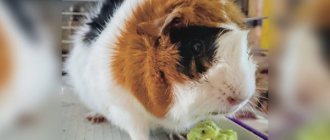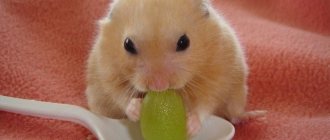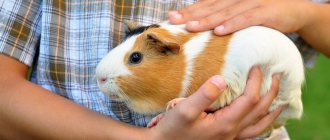Many people like to add a little variety to their guinea pig's diet by varying the fruits and vegetables they offer their pet in addition to the hay and dry guinea pig food or kibble that makes up the majority of their diet. Two foods that people may consider feeding their guinea pigs are grapes and raisins. So, are grapes and raisins safe for guinea pigs and do they add any nutritional value to their diet?
Decorative rats - grapes and raisins in the diet
Eating sweet fruits is a real pleasure for a rodent. However, this does not mean that such meals will be beneficial for her. Grapes are one of the sweetest and most high-calorie berries, therefore, both fresh and dried, they should be given with extreme caution. Excessive amounts may harm the health of the rodent. Provoke diseases of the gastrointestinal tract.
A domestic rat will happily accept grapes as a treat. Veterinarians advise giving any berries and fruits, no more than once or twice a week. And no more than 2 berries at a time. The same applies to raisins.
Grapes contain a large amount of B vitamins, many useful macro- and microelements: calcium, magnesium, potassium, iron, etc. So such a treat in reasonable quantities will definitely benefit your pet.
Fruits and berries should not replace the main meal. They are given as a nice sweet bonus. Also, grapes and raisins should not be fed to rodents on an empty stomach; this can lead to problems with the digestive system.
Apples
Can guinea pigs have an apple? Apple tree fruits, as well as leaves and young twigs, are suitable for guinea pigs to eat. Apples can be fed to pets raw or dried. Apples contain fructose, fiber, pectin, vitamins C, E, P, K, group B, carotene and minerals. Guinea pigs prefer sweet varieties of apples.
Before feeding, dried apples should be soaked in water for 2-4 hours and then boiled. You should not give your pets spoiled fruits or those with traces of rot. Guinea pigs should be given chopped apple pieces, without seeds. After all, apple seeds contain a dangerous substance that, under the influence of gastric juice, breaks down and forms hydrocyanic acid, which is a strong poison. The amount of this poison will be enough to kill the animal.
Guinea pigs can be fed pear leaves, fruits and young branches. Pear fruits should be rarely included in a rodent's diet and only as a treat. Pears contain a lot of sugar, which is easily absorbed by the body, which can cause bloating in a guinea pig. The fruit must be given without seeds.
Quality grapes - what are they?
Many owners are very mistaken in believing that a decorative rat should and can eat absolutely everything. Including products that are far from fresh. When choosing grapes, you need to focus on fresh bunches. Rotten berries will bring neither benefit nor pleasure to a rodent. When choosing grapes, pay attention to their appearance.
Article on the topic: The best food for guinea pigs: composition, description, rating
The best solution is to provide grapes grown in environmentally friendly conditions and without chemical treatment. Such berries can be collected at your summer cottage or bought from a small farmer at the market.
If wasps are constantly flying around a stand with grapes, this is an indication that it has not been treated with harmful chemicals. You can safely buy such berries. If you purchased them in a store, then before giving them to your pet, pour boiling water over them several times.
Strawberries and strawberries
Can guinea pigs eat strawberries? These berries contain glucose, fructose, pectin, vitamins A, C, E, group B, iron, calcium, phosphorus, cobalt, manganese.
Guinea pigs can be fed not only fruits, but also strawberry and wild strawberry leaves.
If you grow strawberries and wild strawberries yourself, then you can give them to your guinea pig without fear for your pet’s health. But you need to refuse purchased berries. It has been noticed that guinea pigs eat the leaves and tails of strawberries and wild strawberries more readily than the fruits. Therefore, if your pet refuses a sweet berry, offer him a strawberry leaf or tail. Strawberries and wild strawberries should be given to the rodent only when they are ripe, without signs of spoilage or rot.
Grapes with seeds or not?
Owners are often interested in the question: can a decorative rat be given sultanas? In fact, there is not much difference which grape is better. The presence of seeds will not harm your pet in any way. Typically, the list of prohibited foods for rodents includes pits of apricot, peach, plum, dogwood, cherry and sweet cherry. They contain a substance that is converted into hydrocyanic acid in the body.
But if we compare grape varieties with and without seeds, then, perhaps, the first option will be even more useful, since it usually contains less sucrose than the same sultanas.
To ensure that your rodent is always in a good mood and healthy, take care of its balanced diet. Sweets are something that rats will always eat with great pleasure, regardless of the nutritional value of the food. First of all, rodents focus on taste sensations.
Now you know that you can give grapes to rats, but it is very important not to feed the rodents sugary treats. After all, there should be a little bit of good.
Oranges and tangerines
Citrus fruits are contraindicated for guinea pigs due to their high content of fruit acids.
Fruit acids irritate the skin and acidify urine. But guinea pigs are fed citrus pulp and peels treated with chemicals and rich in essential oils, which should not be done under any circumstances. When eating oranges, tangerines and other citrus fruits, your pet may experience cheilitis, or even death. And guinea pigs will eat whatever you give them.
Cherries, sweet cherries, apricots, peach, plums and other stone fruits contain large amounts of sugar and when feeding a large amount of them along with water to your pet, severe diarrhea occurs. If you want to feed your guinea pig cherries, apricots or other similar fruits, first remove the pit and offer the pig half a cherry or a tiny piece of apricot to start with. If the rodent reacts normally to this fruit, you can gradually increase the amount.
Under no circumstances should you give cherry, sweet cherry, apricot, peach, or plum pits, because they contain hydrocyanic acid.
It is not advisable to give exotic fruits - guava, lychee, mango, papaya, pineapple and others, as they can cause dangerous digestive upset. Some fruits, such as avocados, are toxic to rodents and cause diarrhea.
What foods can you feed guinea pigs?
Even experienced livestock breeders ask questions: what to feed their pet, whether it is possible to give certain products. Before getting a guinea pig, you should find out which foods will benefit the animal and which may harm its health. A guinea pig's daily menu should include vegetables, fruits, berries and cereals. Many vegetables and fruits can even be offered to your pet along with the peel. It is important to remember that not all foods that guinea pigs eat are equally beneficial for them. What rodents can eat and what they cannot feed a guinea pig is discussed in this article.
Article on the topic: Can guinea pigs eat raw and boiled beets, and in what quantity?
“My puppy eats and everything is fine...”
On forums you can see many messages about a dog eating grapes and everything is fine. Entire theories have been put forward about the fact that you can give grapes “from the bush” - they are your own, domestic and safe, many dogs, according to the assurances of their owners, have been eating grapes for several years and everything is fine.
In general, there are many myths about the safety of grapes. Their creation was greatly facilitated by the fact that the nutritional composition of different grape varieties is very different and some of them may indeed be harmless to animals, but which ones have not yet been established.
It is important to remember two things: first, each animal's body is unique. Everyone has their own characteristics, their own diseases and threshold for assimilation of toxic substances
Secondly, the dog’s health depends entirely on you. According to statistics, in most cases this berry turns out to be poisonous, so is it worth the risk?
Fresh and dried, grown on a farm or even with your own hands, bought in a store, seedless grapes (you remember that it’s not the seeds), white and dark - all can equally turn out to be a lethal treat for a pet, leading to kidney failure .
Also, frequent consumption of grapes, even if everything went well the first time, can have a cumulative negative effect. In this case, the consequences of poisoning will appear in a couple of months. All of the above also applies to raisins: these are the same grapes, and the concentration of the substance in them is increased.
IMPORTANT: According to veterinarians, there are no substances in grapes that are beneficial for dogs. If an animal asks for it, this indicates exclusively a love for sweets.
But choosing a safe analogue of sweets will not be difficult.
Vegetables
Can guinea pigs have radishes?
It is permissible to use only radish tops. The root vegetable contains essential oils that can cause irritation to the mucous membranes and respiratory tract of the animal. The vegetable also causes bloating. Therefore, it is not recommended to give radishes to pigs.
Can guinea pigs eat celery?
Celery can be given in any form - stems, leaves, roots. This vegetable is included in many dry food for rodents. Celery is enriched with vitamins B, PP, E, C, A and contains phosphorus, zinc, potassium, calcium, iron and magnesium. Before eating, celery must be washed thoroughly, especially the root.
Can guinea pigs eat tomatoes?
Ripe fruits can be included in the food. Tomatoes are well absorbed by animals and contain vitamin C and carotene, which are beneficial for their body. Green tomatoes contain solanine, which can negatively affect your pet’s health.
Too many tomatoes in an animal's menu can cause loose stools.
Can guinea pigs eat cabbage?
Cabbage can be included in the animal's diet. Cabbage contains many vitamins and other substances necessary for pigs:
- ascorbic acid;
- B vitamins;
- vitamins of the PP group;
- folic acid;
- sulfur;
- calcium;
- potassium;
- phosphorus;
- amino acids;
- microelements.
The vegetable is able to keep the animal’s fur in excellent condition and strengthen its immunity. The top dried leaves should be given. It is preferable to feed guinea pigs Chinese cabbage and broccoli. White cabbage can cause bloating.
Can guinea pigs eat potatoes?
Green and sprouted potatoes are contraindicated for guinea pigs. Raw vegetables can be given occasionally, cut into small pieces. Boiled potatoes can be offered to your pet separately or added to grains and other foods.
The vegetable contains solanine, which can harm the health of the animal if the pet eats too many potatoes. The pig will become passive and catch cold quickly.
Article on the topic: Can guinea pigs eat black or white bread?
Can guinea pigs eat beets?
Beetroot contains many substances useful for animals: vitamins C, A and B, potassium, magnesium, phosphorus, iron. In excess, the vegetable contains fiber, so it acts on the animal’s body as a laxative. Store-bought root vegetables may contain nitrates, which are very harmful to the small body of guinea pigs. It is better to offer your pet homemade crops. The composition also contains a large amount of oxalic acid, so it is better to limit the consumption of this product.
It is recommended to give beets starting from 2 months; they are especially useful in winter and spring, when there are no fresh vegetables. The daily dose should not exceed 200 g, and it is better to exclude beets from the diet of pregnant and lactating pigs so as not to provoke an upset stomach. Beets turn stool and urine red, so if your animal has eaten them, don’t be alarmed by such changes.
Can guinea pigs eat pumpkin?
Pigs can be given all varieties of pumpkin that humans eat. For the digestion of herbivorous animals, such a product will be familiar and useful. Pumpkin contains vitamin C, calcium and phosphorus necessary for rodents. It should be borne in mind that this low-calorie vegetable will not be able to saturate the pig completely, so it is better to give pumpkin to guinea pigs as a treat.
Can guinea pigs eat bell pepper?
Another storehouse of ascorbic acid is bell pepper. Before use, the vegetable must be thoroughly washed and chopped, and the seeds removed. It is better to give the product together with dry food.
Green peppers containing solanine should not be given to animals, as should peppers in the form of hot seasonings. Spicy foods will damage the mucous membranes.
Can guinea pigs eat cucumber?
Cucumbers don't have as many nutrients as other vegetables. You can offer your pet a cucumber. The vegetable can harm your pet's health by causing digestive problems only if consumed in large quantities.
Article on the topic: What can and cannot be given to rats: nutrition table
Can guinea pigs eat zucchini?
Zucchini is suitable for the diet of guinea pigs. They contain small amounts of vitamin C, calcium and phosphorus. It is better to prefer young vegetables; they can be given along with the peel, cut into crowbars.
Why you shouldn't include grapes in your dog's menu
Not long ago, veterinarians noticed that eating grapes in some animals provokes health problems, and in certain cases can even lead to death.
This threat was first noticed by the Society for the Prevention of Cruelty to Animals (ASPCA).
In this article, every pet owner has the opportunity to get acquainted with the information whether dogs can eat grapes, and what fruits are allowed to be included in the diet.
Dog menu and the effect of grapes on the body
The majority of owners are not surprised when animals feast on fruit. Sometimes dogs try to eat foods that their owners eat, in particular grapes. However, eating the fruit can have harmful consequences.
Scientists have determined that grapes and raisins directly caused the deterioration in the animal’s well-being in the majority of the situation.
The dried fruit contains a high level of harmful substances and after eating raisins, the animal can die.
After the dog has eaten the berry, lethargy, diarrhea and vomiting may occur.
The dog will first refuse food, and then it will have problems with urination, even a lack of urine flow into the bladder.
If you do not seek help from a veterinarian in time, your dog may die. Before the doctor arrives, the dog should be given plenty of fluids to drink. The veterinarian must give the animal a drug that induces vomiting.
Therefore, when the question arises: can a dog eat grapes? Every responsible owner must understand that they are prohibited fruits. Such products have a negative effect on kidney function. The content of phosphorus and calcium increases in the blood of animals.
List of fruits that can be added to the nutrition menu
Having become familiar with the frequently encountered problem of whether grapes can be given to a dog, you need to understand that the digestion of animals functions differently than that of humans. However, this does not mean that dogs cannot digest fruits or vegetables. Many of them are not only suitable for use as food for our four-legged companions, but are also very beneficial for health.
Let's analyze the list of acceptable fruits:
- In small doses, bananas are an excellent treat. They contain few calories, but are rich in potassium, fiber and copper.
- Apples are a harmless product that helps improve food digestion and contains a lot of ascorbic acid.
- Pears are rich in copper, ascorbic acid, and also have a lot of fiber. Experts say that consumption of this fruit by animals reduces the risk of cerebral circulatory disorders.
- Oranges. Some owners feed their children citrus fruits without consequences. It is recommended to monitor the body’s reaction; in certain breeds of animal, personal intolerance to this delicacy is monitored. The zest has no harmful elements, but is considered difficult to digest, so the peel should be peeled.
- Watermelons are allowed to be given, as they have a significant amount of vitamins A, B and C. In addition, the berry consists of almost one liquid, so by consuming the fruit the animal will get rid of thirst.
- Strawberries are high in fiber and vitamin C, and the enzyme present is considered a natural teeth whitening agent. Since the berry contains a large amount of glucose, it is recommended to limit the animal from this berry.
- Blueberries are good for cell renewal and contain a lot of fiber.
- Melons are also not harmful to the animal, but too much fruit leads to diarrhea.
- When introducing currants into your dog’s diet, it is recommended to observe the reaction of the animal’s body. When there are no clear expressions of allergic symptoms, for example, the absence of scabies or sneezing, you can safely use it in your diet, but in moderation.
- Raspberries are a healthy berry, but the dose should also be controlled.
- Plums and peaches can cause problems with intestinal digestion. Peaches contain cyanide, which is harmful to both humans and animals.
List of prohibited fruits
In addition to grapes, cherries are another forbidden fruit; the seeds contain too much of a toxic substance that destroys blood cells.
In the case when a pet inadvertently gets enough of the fruit, the main properties of poisoning are dilated pupils and heavy breathing. Avocado contains a toxic substance.
Fruits and berries
Bananas
Can guinea pigs have bananas? A banana rich in potassium will benefit your guinea pig, but you should not give more than 1 piece per day.
The peel of the vegetable must be removed, as it is treated with substances hazardous to health (wax, chemicals, ethylene and pesticides). For safety, it is better to remove soft fibers from the fruit.
Can guinea pigs eat a pear?
Pears can be given with the peel, but without the seeds. The fruit is washed well and cut into pieces; the pig should be offered water along with it. Excessive consumption of pears due to their high sugar content can cause diarrhea.
Can guinea pigs eat kiwi?
Kiwi is a very healthy fruit for animals. It contains a large amount of ascorbic and folic acids. It is also rich in vitamins E, iron, calcium, magnesium and phosphorus.
Kiwi is given without skin in the form of small pieces. For your pet, you need to choose harder fruits. It is better to control the amount you eat. An increase in the dose of kiwi is permissible in autumn and winter, as well as when feeding females during pregnancy and lactation.
Can guinea pigs have oranges and other citrus fruits?
Can be used occasionally. But it is better for guinea pigs to get vitamin C from other foods, avoiding citrus fruits. Possible complications:
- oversaturation with vitamins;
- skin irritation;
- oxidation of urine.
Can guinea pigs eat apples?
Apples can be raw or dried. They have a balanced ratio of sugar and fructose (18:80%). It allows the pig to be active.
The fruit must be peeled and cut into slices. It is better not to give more than 3 pieces at a time.
Article on the topic: What to feed a guinea pig at home: food and a list of foods that can and cannot be included in the diet
Can guinea pigs eat strawberries, grapes and other berries?
Strawberries contain a sufficient amount of vitamin C to pay attention to the berry when choosing a treat for a rodent. You can also give strawberry leaves to animals.
- The pig might like grapes. You can offer the animal seedless grapes.
- Eating currants once a week will also not harm your pet.
- If you do not abuse it, you can offer the pig berries and raspberry leaves, berries, leaves and branches of blueberries, blackberries and sea buckthorn, and rose hips without seeds.
- Cranberries are given for medicinal purposes. It has an anti-inflammatory effect on the mucous membranes of the mouth, stomach, and bladder.
Rules for natural nutrition
Regarding feeding the Pomeranian Spitz with natural food, there are general recommendations:
- Provide your dog with access to clean drinking water. Change it daily.
- Do not mix natural food and dry food. Choose one diet or give food at different times.
- If you decide to change your diet, you can’t do it right away. The shift period should take 2-3 weeks.
- Give only fresh food. If your pet doesn't eat enough food within 15 minutes, don't let him eat until the next meal.
- Determine the amount of food based on your pet's weight.
- The diet should be balanced. If you decide to feed your dog, consult your veterinarian for recommendations.
Dogs should not be given sweets.
Spitz can be given meat raw or slightly scalded, but only after preliminary freezing. Replace meat with offal two to three times a week.
Offal products that are an excellent addition to a natural diet include:
- scar;
- liver;
- lungs;
- kidneys;
- trachea.
By-products You can also give dogs low-fat sea fish, but not earlier than four months of age. This product should be given deboned, no more than once a week, completely replacing meat with fish.
Sour dairy products must be present in the diet. Their norm is no more than 30% of the daily food intake. For up to six months, your Spitz should be given cottage cheese every day. It is rich in calcium, which allows the formation of a healthy bone skeleton and cartilage tissue.
Add fermented milk to your diet about five times throughout the week.
The carbohydrate component is porridge, but not more than 15% of the total daily diet. You can feed buckwheat, rice, and oatmeal cooked in water or low-fat broth (no more than 2-3 times a week).
Suitable cereals for feeding
Egg yolks are responsible for the fat component. You can give quail eggs, but no more than 1-2 times a week in the amount of two or three pieces.
In hot weather, feed your dog once a day. During cold weather, distribute food evenly.
Pregnant and lactating bitches should not be hungry, so the food bowl does not need to be removed immediately after eating.
Dairy
Can guinea pigs have milk?
Giving milk to guinea pigs is not recommended. The enzyme that is responsible for the breakdown of milk sugar (lactose) is found in insufficient quantities in the body of animals. If your pig drinks milk, the lactose will cause diarrhea and bloating. More serious diseases may develop in the future, so it is better to show your pet to a doctor.
Females can and even need to be given milk during lactation. You can soak crackers in milk and offer them to your pig.
The ban also applies to other dairy products: cottage cheese, cheese, yogurt and others.
Is it possible to give hamsters persimmons?
There is an opinion that you need to let the hamster try the product. If he eats it, then you can feed him. This approach is fundamentally wrong. Most hamsters will eat any food they can get their hands on.
In nature, they can even consume poisonous foods to their detriment. Therefore, before feeding your pet this or that fruit or vegetable, you should first find out whether this can be done and consult with an experienced specialist.
Persimmon should not be given to Djungarian hamsters Despite all the beneficial properties of persimmon, giving it to hamsters is strictly not recommended for several reasons:
- Persimmons contain a large amount of sugar, which is one of the main prohibitions in the diet of domestic hamsters. This is especially true for Dzungarian and Syrian species.
- Your hamster's diet should include foods that they eat in their natural habitat. Persimmon is not one of these fruits, as it grows in other regions.
- Persimmons contain quite a large amount of tannins. They directly affect the functioning of the digestive organs. If you look deeper, tannins are used to regulate and slow down intestinal motility.
Other products
Can guinea pigs eat bread? It's better not to give.
- Fresh yeast bread takes a long time to digest and causes fermentation in the animal’s stomach.
- White bread causes bloating.
- Your pet can eat stale bread, but not often.
- Dried bread with seeds, sesame seeds and raisins can sometimes be offered to your pet as a treat.
Can guinea pigs eat nuts and seeds?
Nuts and seeds are among the allowed foods, but can cause obesity if their consumption is not limited. It is better to offer your pet almonds, walnuts or hazelnuts.
The seeds contain many components useful for the animal: fatty acids, calcium, sodium, phosphorus, proteins and vitamins. It is better to give peeled seeds and make sure that they are no more than 15% of the total feed.
Article on the topic: Is it possible to give strawberries to guinea pigs?
Fresh
Sweet berries are not only a source of simple carbohydrates (sugar), but also a storehouse of B vitamins, pectin and organic acids. Seedless grapes can be offered to the animal, but only in moderation. So, it is enough to add no more than one fruit to your pet’s menu per day. After first removing all the bones from its pulp that harm the animal’s gastrointestinal tract.
Fresh product is not allowed for guinea pigs having:
- severe excess weight;
- digestive problems;
- diseases of the excretory system.
Grape juice has a tonic and general strengthening effect.
It is allowed to offer guinea pigs raisins, but a maximum of one per day. It is recommended to give preference only to the product, untreated with chemicals, obtained from white varieties of fruit.
Important! Dried fruits are given to the animal several times a week, 1 berry per day.
Overfeeding pets with fruits with a lot of sugar leads to intestinal upset and thirst, and in the long term – to kidney problems and obesity.
Read about how much and how often you can feed your pet strawberries and cherries in our articles “Can guinea pigs eat cherries?” and “Can a guinea pig have strawberries?”
What is harmful for pigs?
Some foods are given to animals in limited quantities. They may not lead to serious poisoning, but they will definitely upset the rodent’s digestive system.
Vegetables
A list of vegetables that are not suitable for a pig’s daily diet or should be excluded completely:
- Tomatoes. Despite their nutritional value, the high content of acids (including citric, oxalic, abscisic), when fed daily, will lead to irritation of the rodent’s delicate stomach. Therefore, a small piece of tomato can be given no more than once a week.
- White cabbage, cauliflower, Brussels sprouts, red cabbage. It has a rich set of microelements, but the animal's digestive system is not designed to digest large quantities of cabbage leaves, which can cause severe diarrhea.
- Legumes are given only in the form of young sprouted stems. Boiled or raw peas and beans will cause bloating and poisoning. Let's say there is a small amount of fresh green peas.
- Potato. Eating large amounts of starch is harmful for the animal. Potato tops are the strongest poison.
- Radish, radish. Contain harsh essential oils that can severely harm the digestive system. Therefore, they do not need to be included in the diet.
- Animals should absolutely not eat garlic and onions to avoid burns to the esophagus.
- Bell peppers are given in limited quantities. It may upset digestion. It is absolutely forbidden to give hot pepper.
Article on the topic: Can guinea pigs eat tangerines, oranges and lemons?
Fruits, berries
List of unwanted and prohibited fruits and berries:
- Sour apples are contraindicated for pigs.
- Lemon is strictly contraindicated for animals; it is a strong acid.
- Oranges and tangerines, peeled and peeled, should be well-ripened and sweet. Citrus peels are poisonous to rodents. In addition, the pig may have individual intolerance.
- Choose hard pears to avoid diarrhea.
- Banana is harmful because it can cause obesity.
- Melons (watermelon, melon) contain a lot of harmful sugars and weaken the stomach. Their use is limited.
- Stone fruits (plum, peach, apricot, cherry) are too sweet and disturb digestion.
Dried fruits are not on the list of prohibited foods. However, they must be prepared without the use of preservatives. You should not get carried away with them so that the animal does not get diabetes.
Animal products
Unlike hamsters, guinea pigs do not need food of animal origin. Their digestive system is capable of digesting only plant foods. You cannot offer them milk, cottage cheese, butter, meat, eggs, or fish. In their natural habitat they do not eat such food.
Herbs
The choice of grass and hay must be approached carefully. It is enough for an animal to eat a small amount of a poisonous plant to become poisoned.
Poisonous herbs include: celandine, datura, spurge, lily of the valley, poppy, hemlock, mustard, marsh marigold, foxglove, wild rosemary, night blindness, hellebore, buttercups, borer, larkspur. St. John's wort, milk thistle, coltsfoot, dandelion, and wormwood should be limited.
The animal should not eat herbs, for example, mint, thyme, sage, basil.
When there are doubts about edibility, such greens are not offered to the rodent.
Indoor flowers
The vast majority of indoor flowers are poisonous. Common plants such as aloe, monstera, kalanchoe, cyclamen, ivy, dieffenbachia, philodendron, spathiphyllum, violet should not be within the animal’s reach.
If your pet has enough food, he will not try to try indoor plants. Situations are different, so flower pots should be lifted from the floor.
Article on the topic: Is it possible to give radishes (fruit, leaves, tops) to guinea pigs?
What happens if a hamster eats a persimmon?
If you were in a hurry and decided to treat your pet to persimmons, be prepared for problems with the gastrointestinal tract.
First of all, carefully monitor the behavior and condition of your hamster. Any violation of habitual behavior signals that the animal has a problem. In severe cases, you should contact a veterinarian.
As we have already said, persimmon contains a large amount of tannins, and this can cause severe constipation in the animal or intestinal obstruction.
- Take a syringe without a needle.
- Take 1-2 ml of Vaseline oil and squirt it into your pet’s mouth. In extreme cases, you can use any vegetable or edible oil.
- Repeat after 20 minutes.
- Give a light abdominal massage, clockwise.
- If bowel movement does not occur within 4 hours, contact your veterinarian. The animal may have intestinal obstruction, which cannot be cured at home.
Also, the regular presence of persimmons in a hamster’s diet will lead to increased blood sugar levels and diabetes. This is a common problem with pet rodents.
You should not feed your Syrian hamsters persimmons. If your pet has eaten a small amount of persimmons, then it may not cause serious problems. First of all, you should provide the animal with plenty of fluids and not give food for several 5-12 hours.
What other foods are contraindicated for pigs?
What is not poisonous to humans can be destructive to the delicate body of a guinea pig.
Products that should be included in the diet in very small quantities:
- hazelnut;
- Walnut;
- seeds (sunflower, pumpkin, dill, sesame).
Sweets should never be given to a rodent. Candies, chocolate, marshmallows, halva are heavy foods that will lead to poisoning. Even the smallest amount of chocolate acts as a strong poison on the pig’s body.
You should not tempt fate and give the animal exotic fruits, no matter how much he begs for them. The pig is not given baked goods (including crackers, bagels), cookies, boiled porridge, soups and borscht in any form. The digestive system of these animals is not adapted to thermally processed foods.
Banana
Can guinea pigs have bananas? Bananas contain a lot of vitamins and microelements. But this exotic fruit can be given occasionally in limited quantities, since due to the high sugar content in this fruit, problems with the rodent’s digestion may occur.
As for banana peels, you should not give them at all. After all, bananas are treated several times with chemicals for long-term storage. And just because your pet eats banana peels doesn't mean you can feed them to your guinea pig.
Results
Guinea pigs are unpretentious in maintenance and care and are not picky about food. At first glance this seems like too many restrictions. In fact, the rule is simple: food should be healthy, low-fat, free of chemicals, spices, salt, and not irritate the esophagus. Grains, greens, most fruits and vegetables, branches of fruit trees - the list of permitted products is very large. In addition, you can always buy ready-made balanced grain mixtures in the store.
Sources:
https://animallittle.ru/mozhno-li-vinograd-krysam.html https://nalugah.ru/zhivotnovodstvo/morskie-svinki/chem-mozhno-i-nelzya-kormit-morskuyu-svinku.html https:// msvinkam.ru/pitanie/chto-nelzya-morskim-svinkam.html


